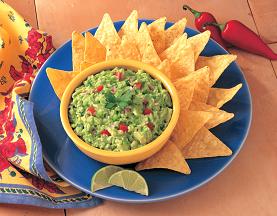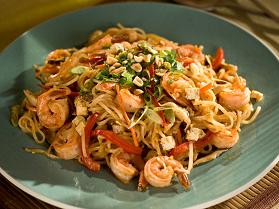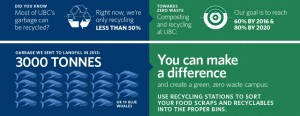In this blog, you’ll find some unique and easy recipes for everybody! These include peanut butter banana split sandwiches and beef-broccoli stir fries.
APPETIZERS:
1) Chocolate Bruschetta
(yields 10)

-10 thinly sliced French Bread slices
-bittersweet Baker’s chocolate (or nutella…)
-1/4 teaspoon coarse sea salt
-optional grated orange rind
How To: Preheat your broiler while sprinkling each slice with about 1.5 tablespoons of chocolate. Then, broil for 5 minutes, sprinkle with sea salt and garnish with orange rind. Serve warm!
2) Guacamole
(yields 4 servings)

-1.5 tablespoons of coarsely chopped red onion
-1 tablespoon of lime juice
-1/8 teaspoon salt
-1 garlic clove
-1/2 jalapeno pepper
-1 avocado
-2 tablespoons of cilantro leaves
How To: place your red onions, lime juice, salt, garlic, and jalapeno in a food processor or blender. Pulse 5 times, or until finely chopped. Add the avocado and mix by hand with a fork if like chunks, or in the blender for smooth guacamole. Sprinkle with cilantro and serve with nachos.
SANDWICHES:
1) Mashed Chickpea Pitas (vegetarian & healthy)
(yields 4)

-2 minced garlic cloves
-6 tablespoons of plain fat-free Greek yogurt
-2 tablespoons of low-fat mayo
-1 tablespoon of lime juice
-1/2 tablespoon of salt
-1 can of chickpeas
-1/2 cup of diced cucumber
-1 tablespoon of chopped fresh dill
-1shredded carrot
-2 pitas cut in half
-4 lettuce leaves
How To: Mash the garlic cloves, 5 tablespoons of yogurt, mayo, lime juice, salt, and chickpeas in a bowl with a fork. Now, stir in the cucumber and dill. Then, stir the remaining yogurt in with the carrots in a separate bowl until the carrots are well-coated. Heat up the pitas in a toaster oven, then line each pita with a lettuce leaf. Fill it with 1/2 a cup of the chickpea mixture and 2 tablespoons of the carrot mixture.
2) Grilled Peanut Butter and Banana split Sandwich

-2 slices of bread
-1 teaspoon of softened butter
-1 tablespoon of your favourite peanut butter
-2 teaspoons of honey
-1/2 teaspoon of semisweet chocolate chips
-1 thinly sliced large strawberry
-1/2 a small banana cut lengthwise into 3 slices
-1 optional tablespoon of pineapple jam
How To: Spread one side of each bread slice with butter. Combine the PB and honey, then spread over the plain side of one bread slice- sprinkle with chocolate chips. Top evenly with strawberry and banana slices. Spread the pineapple jam (optional) over the plain side of the other bread slice. Carefully put the two slices together. Heat a skillet over medium heat on your stove. add the sandwich and cook for around 2 minutes on each side until lightly browned.
3) Cheesy Chicken and Pepper Sandwich
(yeilds 4)

-8 slices of bread
-1 pound of chicken tenders
-1/2 teaspoon dried oregano
-1/4 teaspoon salt
-1/4 teaspoon black pepper
-1 large sliced yellow bell-pepper
-1/2 cup marinara sauce
-2 ounces of mozzarella shredded cheese
How To: Preheat your broiler and lightly toast your bread. Sprinkle chicken tenders with oregano, salt, and pepper and cook on a skillet over the stove. Add bell pepper to the pan and cook for 2 minutes before stirring in the marinara sauce. Heat the mixture for another 30 seconds then divide the mixture evenly between the 4 sandwiches. Top them evenly with cheese and broil the bread slice with the mixture and cheese until the cheese melts. Place the top slice on the sandwich.
DINNER:
1) Shrimp Pad Thai
(serves 5)
-8 ounces uncooked spaghetti
-1/4 cup teriyaki sauce
-2 tablespoons hot water
-3 tablespoon creamy peanut butter
-1/4 teaspoon Sriracha hot sauce
-2 teaspoons dark sesame oil
-1 teaspoon minced garlic
-1 pound shrimp
-4 cups snow peas
-1/3 cup chopped cilantro
-5 lime wedges
How To: Cook pasta and drain. Combine the teriyaki sauce, hot water, peanut butter, and Sriracha. Heat the sesame oil in a skillet over medium-high heat and saute the shrimp for 2 minutes or until almost cooked. Add in the teriyaki sauce mixture and cook for another 2 minutes until the sauce thickens. Add the pasta and snow peas, cook for 2 minutes. Sprinkle with cilantro and peanuts, then serve with lime wedges.
2) Beef-Broccoli Stir Fry
(serves 4)
-7 ounces of rice
-2 tablespoons of soy sauce
-1teaspoon sugar
-1 pound pre-sliced stir fry beef
-1/2 cup beef broth
-1 tablespoon cornstarch
-1 tablespoon hoisin sauce
-1 teaspoon Sriracha hot sauce
-2 tablespoons canola oil
-1 tablespoon bottled ground ginger
-2 tablespoons minced garlic
-4 cups chopped broccoli
-1/3 cup sliced green onions
How To: Cook rice. Combine 1 tablespoon soy sauce, sugar and beef. In another bowl, combine the other tablespoon of soy sauce, broth, cornstarch, hoisin, and Sriracha. Heat 1 tablespoon of oil on a skillet over medium-high heat. Add the beef mixture and saute for 3 minutes. Remove the beef from the pan and add the remaining oil to the pan. Now cook the ginger and garlic for 30 seconds while stirring. Add the broccoli and 1/4 cup water, cook for 1 minute. Add the onions, cook for 1 minute while stirring. Add the broth mixture and beef mixture and cook for 2 minutes or until beef is thoroughly heated and sauce is slightly thick. Serve the beef mixture over rice.
by Shazia Damji








